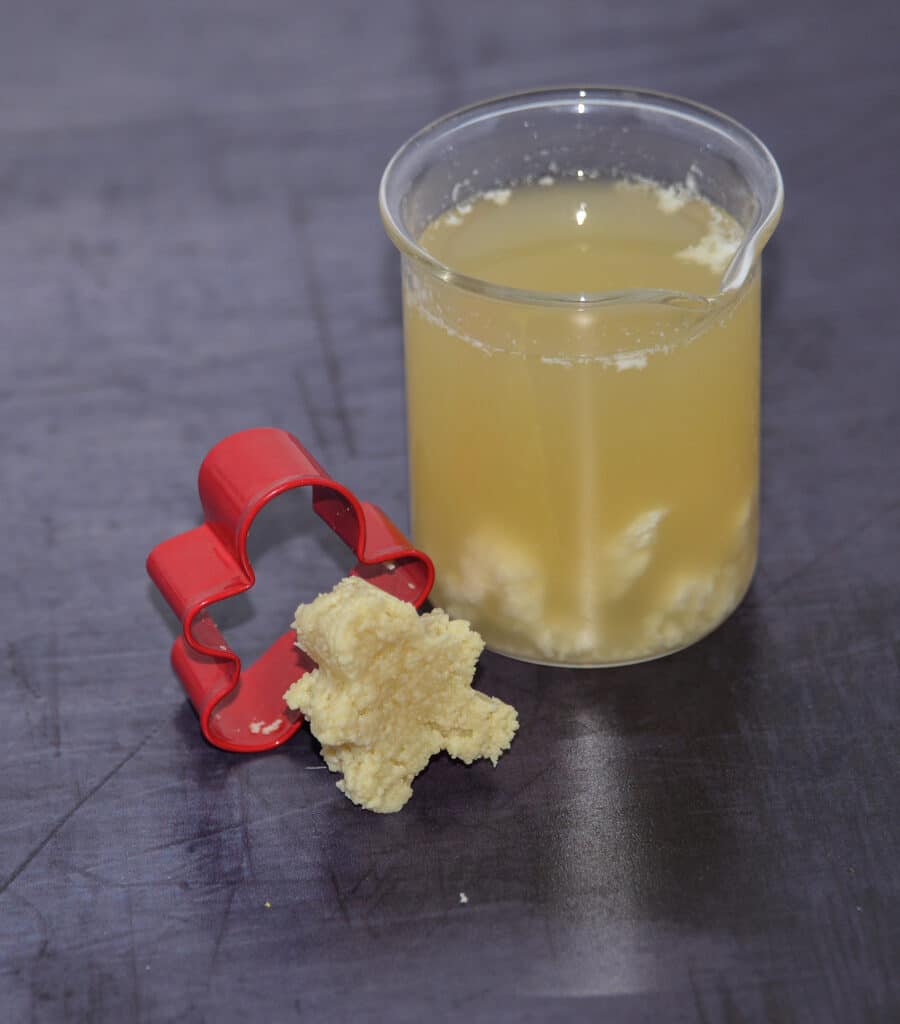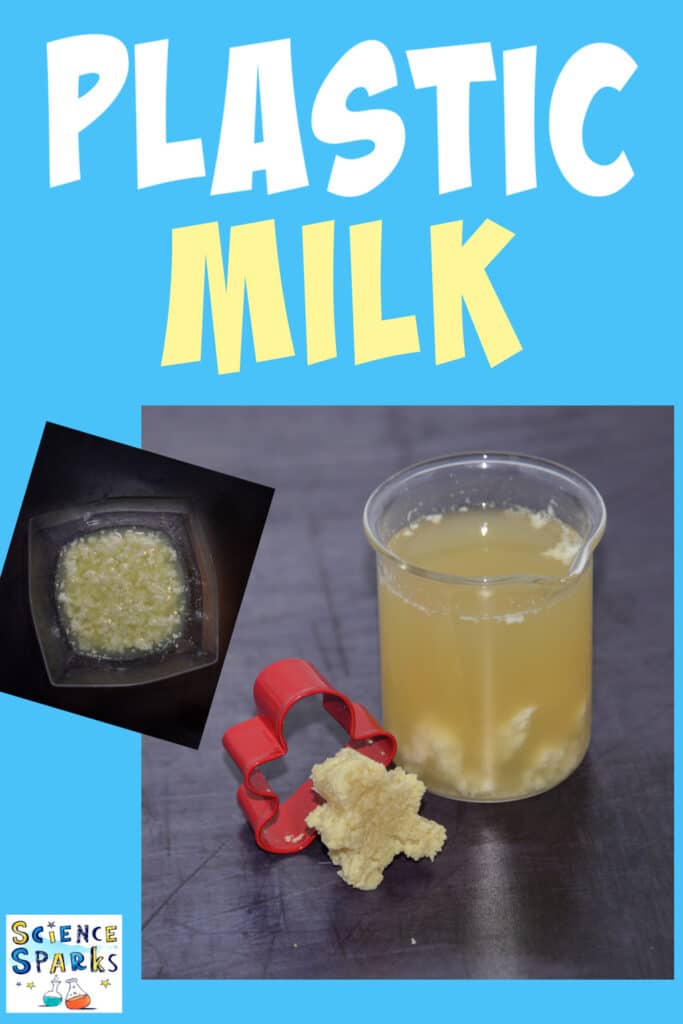Plastic milk was one of the first experiments I posted on Science Sparks when the kids were little. It was a lovely sensory experience for them at the time, but they obviously couldn’t understand what was happening; with that in mind, we revisited the activity with the addition of some food colouring.
I didn’t measure the ingredients at all.
To make plastic milk, you will need
- Semi-skimmed milk
- White vinegar
- Food colouring
- A sieve
- Cookie cutter
Plastic milk instructions
- Pour about a cupful of milk into a pan, add some food colouring if you want it coloured, and heat until bubbles start to form. Be careful and ask an adult to help.
- Add a tablespoon of white vinegar and watch the solid and the liquid parts of the milk separate.
- Filter carefully using the sieve.
- Leave to cool and then mould as you wish
Why does milk separate into curds and whey?
Milk contains proteins and fats suspended in water. If the milk is fresh, the proteins move around freely. When the pH drops, the protein molecules stick to each other, creating lumps ( curds ). The liquid left behind is known as whey.
Curdling ( when milk separates ) is a sign that the milk has started to go off. The curds are made from casein. Casein protein chains in milk are usually curled up and dissolved, but the vinegar makes them take a different shape and form lumps that can be moulded into shapes.
This activity can also be found in my book GROSS SCIENCE!!

More science experiments using milk
Learn about emulsions with a colourful magic milk display!
Find out how to make glue from milk.

Last Updated on February 15, 2023 by Emma Vanstone



This looks such fun. I really must try it with my little ones.
Definitely got to try this one with the kids! Pinned!
You can make this edible (and more palatable) if you use lemon juice rather than vinegar. This is exactly how the Indian cheese paneer is made.